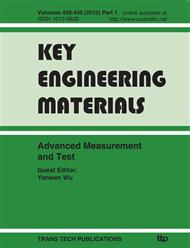p.1052
p.1057
p.1063
p.1069
p.1075
p.1081
p.1087
p.1093
p.1099
The Application of Evolutionary Algorithm to Image Fusion
Abstract:
This paper presents a novel evolutionary algorithm to image fusion. An original image is divided into blocks with fixed size. According to the idea of the evolutionary algorithm, the image is analyzed using fractal dimension to attain its feature blocks containing edges and textures that are used in the later embedding process and used to form a feature label. The evolutionary algorithm that is the fusion of the feature label and a binary copyright symbol not only represents the copyright symbol, but also reflects the feature of the image. The evolutionary algorithm that is adaptive to the individual image is embedded into the relations between middle-frequency coefficients and corresponding DC coefficients. Experimental results show that this evolutionary algorithm can get good perceptual invisibility, adaptability and security.
Info:
Periodical:
Pages:
1075-1080
Citation:
Online since:
June 2010
Authors:
Price:
Сopyright:
© 2010 Trans Tech Publications Ltd. All Rights Reserved
Share:
Citation:


